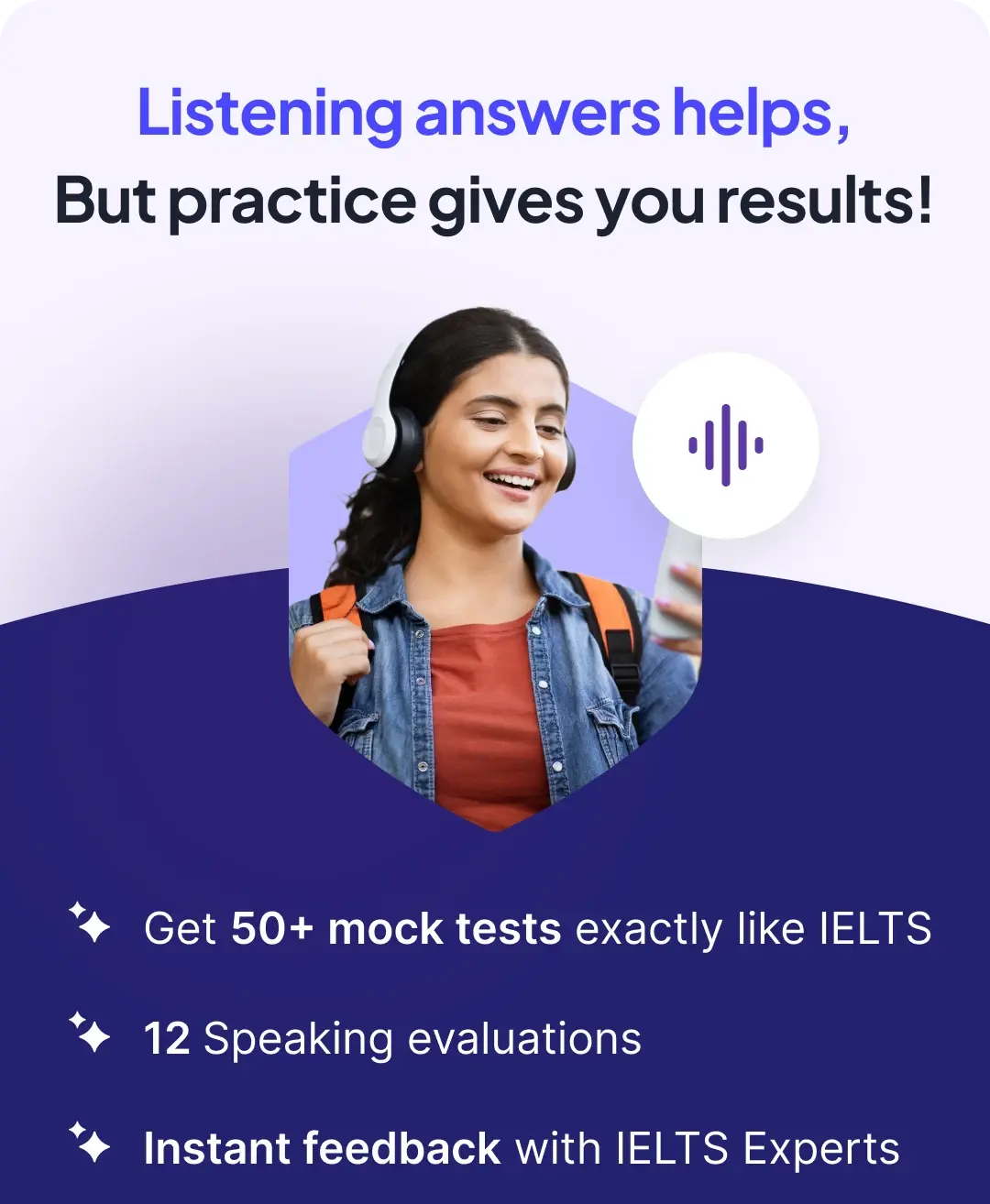Describe A Tourist Attraction You Enjoyed Visiting: IELTS Speaking Cue Card
You should say
- What this tourist attraction is?
- What you did there?
- Why you enjoyed visiting this tourist attraction?
- How did you feel about it?
17 unique answers with expert feedback
Band 7
00:00
/
00:00
Follow up questions
Follow up questions
What other attractions in Dubai would you recommend to visitors?
How does Dubai compare to other places you've visited?
What was your favorite activity in Dubai and why?
Band 6-7
00:00
/
00:00
Follow up questions
Follow up questions
What specific activities did you enjoy while visiting Puri?
How does visiting Puri compare to other tourist attractions you've been to?
What would you recommend to someone planning to visit Puri?
Band 6-7
00:00
/
00:00
Follow up questions
Follow up questions
What other attractions did you visit in Mahabalipuram?
How did you feel about the local culture in Mahabalipuram?
Would you recommend Mahabalipuram to other tourists?
Practice other cue cards
Band 6-7
00:00
/
00:00
Follow up questions
Follow up questions
What other tourist attractions have you visited?
How do you usually plan your trips?
What activities do you enjoy doing while traveling?
Band 6-7
00:00
/
00:00
Follow up questions
Follow up questions
What other tourist attractions have you visited?
How do you usually plan your visits to tourist attractions?
What do you think is the importance of preserving tourist attractions?
Cue 1:What this tourist attraction is?
- Begin by naming the tourist attraction clearly and providing its location.
- Include a brief background about the attraction, such as its significance or history.
Example
The tourist attraction I enjoyed visiting is the Taj Mahal, located in Agra, India. It is a UNESCO World Heritage Site and is renowned for its stunning architecture and historical significance as a symbol of love.
Cue 2:What you did there?
- Describe the activities you engaged in while visiting the attraction.
- Mention any specific highlights or experiences that stood out during your visit.
Example
During my visit to the Taj Mahal, I took a guided tour to learn about its history and architecture. I also spent time taking photographs, especially at sunrise when the marble glows beautifully. Walking through the gardens was a serene experience, and I enjoyed the peaceful atmosphere.
Cue 3:Why you enjoyed visiting this tourist attraction?
- Explain what made the experience enjoyable, such as the beauty, history, or personal significance.
- Share any emotional or memorable moments that contributed to your enjoyment.
Example
I enjoyed visiting the Taj Mahal because of its breathtaking beauty and the romantic story behind its creation. Standing in front of such an iconic monument made me feel connected to India's rich history. The intricate details of the marble work left me in awe, and I felt a sense of peace and inspiration.
Cue 4:How did you feel about it?
- Reflect on your overall feelings during and after the visit.
- Mention any lasting impressions or thoughts that the visit left on you.
Example
After visiting the Taj Mahal, I felt a deep sense of appreciation for India's cultural heritage. The experience was not just about seeing a beautiful building; it was about understanding the love story behind it. I left feeling inspired and grateful for the opportunity to witness such a magnificent piece of history.
Conclusion
Example
In conclusion, visiting the Taj Mahal was an unforgettable experience that combined beauty, history, and personal reflection. It is a place that I would recommend to anyone looking to explore the rich culture of India.
Following this structure will ensure you cover all the essential points while providing a clear and engaging response to the cue card topic.
Tips to answer this Cue Card
1: Being Too Vague
Candidates often provide general statements without specific details about the attraction. This can make the response less engaging and informative.
Tip
Include specific examples, such as unique features or activities you enjoyed, to make your answer more vivid and memorable.
2: Ignoring the Cues
Some candidates fail to address all the cues provided, which can lead to an incomplete answer and lower scores.
Tip
Make sure to answer each cue clearly and in order, ensuring you cover what you did, why you enjoyed it, and how you felt.
Overusing Simple Language
Using overly simple language can make your response sound less sophisticated and limit your vocabulary score.
Tip
Try to incorporate a variety of vocabulary and sentence structures to demonstrate your language proficiency while remaining clear.
IELTS Cue Cards asked last week
Reported by Leap students who gave IELTS
All Answers
Here are all the answers by real-users practicing speaking for IELTS Cue Cards on our IELTS Prep App.
Band 7
Band 6-7
Band 6-7
Band 6-7
Band 6-7
Band 6
Band 6
Band 6
Band 6
Band 6

Explore
473 Cue Cards

Personal Experience
121 Cue Cards

Describing People
66 Cue Cards

Travel
47 Cue Cards

Personal Development
45 Cue Cards

Hobbies/Interests
44 Cue Cards
Environment/Culture
39 Cue Cards

Tech/Media
27 Cue Cards

Education/Work
19 Cue Cards

Social Issues
19 Cue Cards

Describe An Object
16 Cue Cards
Business/Shopping
16 Cue Cards

Food/Cooking
8 Cue Cards
Fashion
6 Cue Cards
Master IELTS Speaking with Leap's Self-Prep Course
Students Enrolled
2,411 Reviews

Master IELTS Speaking with Leap's Self-Prep Course
Students Enrolled
2,411 Reviews



